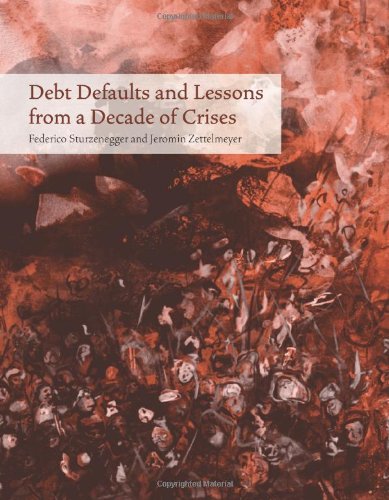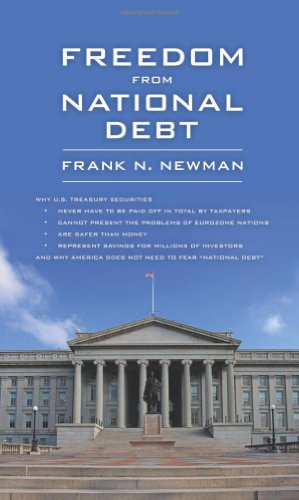[from] Videos
The Great American Recession resulted in the loss of eight million jobs between 2007 and 2009. More than four million homes were lost to foreclosures. Is it a coincidence that the United States witnessed a dramatic rise in household debt in the years before the recession?that the total amount of debt for American households doubled between 2000 and 2007 to $14 trillion? Definitely not. Armed with clear and powerful evidence, Atif Mian and Amir Sufi reveal in House of Debt how the Great Recession and Great Depression, as well as the current economic malaise in Europe, were caused by a large run-up in household debt followed by a significantly large drop in household spending.
Though the banking crisis captured the public’s attention, Mian and Sufi argue strongly with actual data that current policy is too heavily biased toward protecting banks and creditors. Increasing the flow of credit, they show, is disastrously counterproductive when the fundamental problem is too much debt. As their research shows, excessive household debt leads to foreclosures, causing individuals to spend less and save more. Less spending means less demand for goods, followed by declines in production and huge job losses. How do we end such a cycle? With a direct attack on debt, say Mian and Sufi. More aggressive debt forgiveness after the crash helps, but as they illustrate, we can be rid of painful bubble-and-bust episodes only if the financial system moves away from its reliance on inflexible debt contracts. As an example, they propose new mortgage contracts that are built on the principle of risk-sharing, a concept that would have prevented the housing bubble from emerging in the first place.
Thoroughly grounded in compelling economic evidence, House of Debt offers convincing answers to some of the most important questions facing the modern economy today: Why do severe recessions happen? Could we have prevented the Great Recession and its consequences? And what actions are needed to prevent such crises going forward?
Why do lenders time and again loan money to sovereign borrowers who promptly go bankrupt? When can this type of lending work? As the United States and many European nations struggle with mountains of debt, historical precedents can offer valuable insights. Lending to the Borrower from Hell looks at one famous case–the debts and defaults of Philip II of Spain. Ruling over one of the largest and most powerful empires in history, King Philip defaulted four times. Yet he never lost access to capital markets and could borrow again within a year or two of each default. Exploring the shrewd reasoning of the lenders who continued to offer money, Mauricio Drelichman and Hans-Joachim Voth analyze the lessons from this important historical example.
Using detailed new evidence collected from sixteenth-century archives, Drelichman and Voth examine the incentives and returns of lenders. They provide powerful evidence that in the right situations, lenders not only survive despite defaults–they thrive. Drelichman and Voth also demonstrate that debt markets cope well, despite massive fluctuations in expenditure and revenue, when lending functions like insurance. The authors unearth unique sixteenth-century loan contracts that offered highly effective risk sharing between the king and his lenders, with payment obligations reduced in bad times.
A fascinating story of finance and empire, Lending to the Borrower from Hell offers an intelligent model for keeping economies safe in times of sovereign debt crises and defaults.
Founder of MyDebtFreeCollege.com, Kevin Y. Brown, author of 10 Ways Anyone Can Graduate from College DEBT-FREE: A Guide to Post Graduate Freedom reflects back on his college experience…”If I have to take out a loan for college, I’m dropping out!” is what he said to his dormitory hall director, a few days in to college. With zero knowledge of the college, financing system Kevin took it upon himself to be proactive and take control of his college finances. Upon graduation, Kevin proved to have kept his promise to himself and today he is free of any college debt. With approximately 37 million student loan borrowers having outstanding student loans and people in the 18 to 24–age bracket spending nearly 30% of their monthly income on student loan debt repayment there is a need for a guide to help students navigate the financial aspects of college life and avoid the pitfalls of student loans and related college debt. 10 Ways Anyone Can Graduate From College DEBT-FREE provides: • 10 proven strategies that can help students avoid student loan debt • Personal stories of the authors experience with each strategy • A list of over 100 scholarships valued at over $10 million dollars • Consequences of defaulting on student loans • An understanding of the various types of financial aid • Up-to-date data on life-time earnings vs. education levels • Current data on and the state of the student loan debt crisis
In a nation whose debt has outgrown the size of its entire economy, the greatest threat comes not from any foreign force but from Washington politicians who refuse to relinquish the intoxicating power to borrow and spend. Senator Tom Coburn reveals the fascinating, maddening story of how we got to this point of fiscal crisis—and how we can escape.
Long before America’s recent economic downturn, beltway politicians knew the U.S. was going bankrupt. Yet even after several so-called “change” elections, the government has continued its wasteful ways in the face of imminent danger. With passion and clarity, Coburn explains why Washington resists change so fiercely and offers controversial yet commonsense solutions to secure the nation’s future.
At a time when millions of Americans are speculating about what is broken in Washington, The Debt Bomb is a candid, thoughtful, non-partisan exposé of the real problems inside our government. Coburn challenges the conventional wisdom that blames lobbyists, gridlock, and obstructionism, and places the responsibility squarely where it belongs: on members of Congress in both parties who won’t let go of the perks of power to serve the true interests of the nation—unless enough citizens take bold steps to demand action.
“Democracy never lasts long. It soon wastes, exhausts, and murders itself. There was never a democracy yet that did not commit suicide.” —John Adams
Throughout a distinguished career as a business owner, physician, and U.S. senator, Tom Coburn has watched his beloved republic careen down a suicidal path. Today, the nation stands on the precipice of financial ruin, a disaster far more dangerous to our safety than any terrorist threats we face. Yet Coburn believes there is still hope—if enough Americans are willing to shake the corridors of Washington and demand action.
With an insider’s keen eye and a caregiver’s deft touch, Coburn diagnoses the mess that career politicians have made of things while misusing their sacred charge to govern.
Coburn’s incisive analysis:
Reveals the root causes of America’s escalating financial crisis Exposes Washington’s destructive appetite for wasteful spending, power grabs, backroom deals, and quick non-fixes Rises above partisanship to implicate elected officials of all stripes in steering the nation off course Lays out a commonsense guide to restoring order Concludes with a clarion call and sound advice for Americans who would dedicate themselves to defusing the debt bomb
Above all, Coburn believes the United States can continue as a beacon of opportunity for future generations—but how we act today will determine whether we deliver the nation to our children and grandchildren fully alive, on life support, or without a pulse.
The debt crises in emerging market countries over the past decade have given rise to renewed debate about crisis prevention and resolution. In Debt Defaults and Lessons from a Decade of Crises, Federico Sturzenegger and Jeromin Zettelmeyer examine the facts, the economic theory, and the policy implications of sovereign debt crises. They present detailed case histories of the default and debt crises in seven emerging market countries between 1998 and 2005: Russia, Ukraine, Pakistan, Ecuador, Argentina, Moldova, and Uruguay. These accounts are framed with a comprehensive overview of the history, economics, and legal issues involved and a discussion from both domestic and international perspectives of the policy lessons that can be derived from these experiences.Sturzenegger and Zettelmeyer examine how each crisis developed, what the subsequent restructuring encompassed, and how investors and the defaulting country fared. They discuss the new theoretical thinking on sovereign debt and the ultimate costs entailed, for both debtor countries and private creditors. The policy debate is considered first from the perspective of policymakers in emerging market countries and then in terms of international financial architecture. The authors’ surveys of legal and economic issues associated with debt crises, and of the crises themselves, are the most comprehensive to be found in the literature on sovereign debt and default, and their theoretical analysis is detailed and nuanced. The book will be a valuable resource for investors as well as for scholars and policymakers.
America is unjustly worried about ”national debt,” believing it can no longer do the many things that mark it as a great nation. Discussions of national undertakings–including infrastructure repair, jobs programs, military modernization, and disease prevention–have all been stifled through fear of insolvency. America has convinced itself that it can no longer afford, as a nation, to do many of the productive things that it has done so well over its history.
That’s a great shame, because America remains a nation of tremendous resources in every sense, and the underlying assumptions about U.S. government financial instruments are not correct. America can never face the debt problems of nations like Greece, thanks to its fundamentally different financial system.
This short book explains why such fears should not hold back America, and why even the expression ”national debt” is neither meaningful nor appropriate for the United States.
In this frank and witty memoir, Ken Ilgunas lays bare the existential terror of graduating from the University of Buffalo with $32,000 of student debt. Ilgunas set himself an ambitious mission: get out of debt as quickly as possible. Inspired by the frugality and philosophy of Henry David Thoreau, Ilgunas undertook a 3-year transcontinental jour¬ney, working in Alaska as a tour guide, garbage picker, and night cook to pay off his student loans before hitchhiking home to New York.
Debt-free, Ilgunas then enrolled in a master’s program at Duke University, determined not to borrow against his future again. He used the last of his savings to buy himself a used Econoline van and outfitted it as his new dorm. The van, stationed in a campus parking lot, would be more than an adventure—it would be his very own “Walden on Wheels.”
Freezing winters, near-discovery by campus police, and the constant challenge of living in a confined space would test Ilgunas’s limits and resolve in the two years that followed. What had begun as a simple mission would become an enlightening and life-changing social experiment. Walden on Wheels offers a spirited and pointed perspective on the dilemma faced by those who seek an education but who also want to, as Thoreau wrote, “live deep and suck out all the marrow of life.”
Struggling with debt? Get realistic help that’s actually useful, from Liz Weston, one of the most popular and respected personal finance experts! Today, people struggling with debt have far fewer options: lenders are stingier, which makes it harder to avert disaster, or to recover from setbacks like foreclosure, short sales, or bankruptcy. (Meanwhile, people with good credit have more options than ever, including some of the lowest interest rates in decades.) You need an up-to-date guide that can help you assess options, find help, discover opportunities, and take action that works. Liz Weston’s Deal with Your Debt, Updated and Revised Edition is that guide. Weston reveals why most “conventional wisdom” about debt is just dead wrong. For most people, it’s simply impractical to pay off every dime of debt, and live forever debt free. In fact, doing that can leave you a lot poorer in the long run. You’re more likely to give up, or pay off the wrong debts. You could leave yourself too little flexibility to survive a financial crisis. You could neglect saving for retirement. You might even wind up in bankruptcy — just what you’re trying to avoid! For most people, it’s smarter to control and manage debt effectively. In this extensively updated guide, Weston shows how to do that. You’ll learn which debts can actually help build wealth over time, and which are simply toxic. You’ll find up-to-date, real-world strategies for assessing and paying off debt, money-saving insights on which debts to tackle first, and crucial information about everything from debt consolidation loans to credit scores and credit counseling. Weston offers practical guidelines for assessing how much debt is safe — and compassionate, realistic guidance if you’ve gone beyond the safety zone. If you’ve ever worried about debt, you’ll find the new edition of Deal with Your Debt absolutely indispensable.








